 Emilia Rabiniak. Wrocław University of Environmental and Life Sciences, Institute of Biology, Chełmonskiego 38c, Wrocław 51-630, Poland. emiliarabiniak@gmail.com
Emilia Rabiniak. Wrocław University of Environmental and Life Sciences, Institute of Biology, Chełmonskiego 38c, Wrocław 51-630, Poland. emiliarabiniak@gmail.com
Emilia Rabiniak graduated from the University of Environmental and Life Sciences of Wroclaw in 2011 and received her PhD in 2017 (the study of ancient DNA of Pleistocene and Holocene small mammals of Central and Eastern Europe). Her research interests also include vertebrate anatomy and molecular evolution. Emilia Rabiniak has participated in palaeontological excavations in Poland.
![]()
 Leonid Rekovets. Wrocław University of Environmental and Life Sciences, Institute of Biology, Chełmonskiego 38c, Wrocław 51-630, Poland. leonid.rekovets@upwr.edu.pl
Leonid Rekovets. Wrocław University of Environmental and Life Sciences, Institute of Biology, Chełmonskiego 38c, Wrocław 51-630, Poland. leonid.rekovets@upwr.edu.pl
Leonid Rekovets is a Professor at the Department of Vertebrate Ecology and Palaeontology in the University of Environmental and Life Sciences of Wroclaw (Poland). He graduated from the Mykola Gogol University of Nizhyn (Ukraine) in 1970. He is specialised in the field of palaeomammalogy, mainly studying of Neogene and Pleistocene small mammals of Europe, biostratigraphy and palaeogeography. He is the author of 5 monographies and more than 200 articles. Leonid Rekovets found a number of new localities with vertebrate remains of different age in the territory of Ukraine and studied fossils from there.
![]()
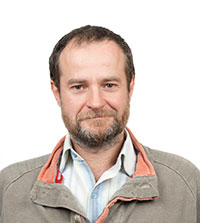 John R. Stewart. Faculty of Science and Technology, Bournemouth University, Christchurch House, Talbot Campus, Poole BH12 5BB, Dorset, United Kingdom. jstewart@bournemouth.ac.uk
John R. Stewart. Faculty of Science and Technology, Bournemouth University, Christchurch House, Talbot Campus, Poole BH12 5BB, Dorset, United Kingdom. jstewart@bournemouth.ac.uk
John Stewart is a Professor of Evolutionary Palaeoecology in Bournemouth University (UK). He is an evolutionary palaeoecologist with broad research interests encompassing the use of faunas in reconstructing Pleistocene and Holocene ecologies (and increasingly from the Neogene), understanding the nature, timing and location of ice age refugia for species, and building and testing molecular biogeographical hypotheses on how species respond to environmental change (in collaboration with ancient DNA practitioners). John Stewart is also interested in the relationship between species and subspecies level evolution and extinction during the Quaternary, and more recently the use of Quaternary data in conservation biology.
![]()
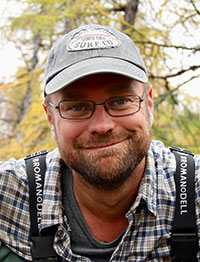 Love Dalén. Department for Bioinformatics and Genetics, Swedish Museum of Natural History, Svante Ahrenius väg 3, Stockholm SE-11418, Sweden, and Centre for Palaeogenetics, Svante Arrhenius väg 20C, Stockholm SE-10691, Sweden and Department of Zoology, Stockholm University, Stockholm SE-10691, Sweden. love.dalen@zoologi.su.se
Love Dalén. Department for Bioinformatics and Genetics, Swedish Museum of Natural History, Svante Ahrenius väg 3, Stockholm SE-11418, Sweden, and Centre for Palaeogenetics, Svante Arrhenius väg 20C, Stockholm SE-10691, Sweden and Department of Zoology, Stockholm University, Stockholm SE-10691, Sweden. love.dalen@zoologi.su.se
Love Dalén is a Professor of Evolutionary Genomics at the Centre for Palaeogenetics, Stockholm University (Sweden). His general research interests are focused on the use of DNA technology to investigate the ecology and evolution of different species, and how past environmental changes have determined the distribution and abundance of organisms. At present, the work he is doing in Stockholm is aimed at investigating how genetic variation, population structure and population size have changed over time, especially in the context of changes in climate during the Late Pleistocene (i.e. the last ice age). Love Dalén is currently working on several projects on different wild animals, for example lemmings, mammoths, rhinos and cave lions.
![]()
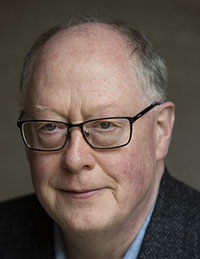 Nick Barton. Institute of Archaeology, Beaumont 36, Oxford OX1 2PG, United Kingdom. nick.barton@arch.ox.ac.uk
Nick Barton. Institute of Archaeology, Beaumont 36, Oxford OX1 2PG, United Kingdom. nick.barton@arch.ox.ac.uk
Nick Barton is an Emeritus Professor of Palaeolithic Archaeology at the University of Oxford (UK). His research interests include early symbolism, modern human behaviour in the Middle and Later Stone Age of North Africa, human adaptations to environmental change in the Upper Palaeolithic and Mesolithic of Britain and northern Eurasia as well as lithic technology and experimental archaeology and cave taphonomy.
![]()
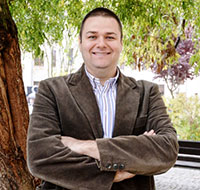 Tomasz Strzała. Wrocław University of Environmental and Life Sciences, Department of Genetics, Kożuchowska 7, Wrocław 51-631, Poland. tomasz.strzala@upwr.edu.pl
Tomasz Strzała. Wrocław University of Environmental and Life Sciences, Department of Genetics, Kożuchowska 7, Wrocław 51-631, Poland. tomasz.strzala@upwr.edu.pl
Tomasz Strzała is an Assistant Professor at the Department of Genetics in the University of Environmental and Life Sciences of Wroclaw (Poland). His research interests are connected with application of molecular biology tools in ex situ and in situ animal protection, mitochondrial genome evolution and comparative genomics, phylogeny reconstruction. Tomasz Strzała is also interested in new methods of genome sequencing and its implementation in molecular ecology and molecular systematics.
![]()
 Zoltán Barkaszi. Department of Palaeontology, National Museum of Natural History, National Academy of Sciences of Ukraine, Bohdan Khmelnytsky 15, Kyiv 01054, Ukraine. zlbarkasi@ukr.net
Zoltán Barkaszi. Department of Palaeontology, National Museum of Natural History, National Academy of Sciences of Ukraine, Bohdan Khmelnytsky 15, Kyiv 01054, Ukraine. zlbarkasi@ukr.net
Zoltán Barkaszi is a Junior Researcher at the Department of Palaeontology, National Museum of Natural History of the National Academy of Sciences of Ukraine. He graduated from the Faculty of Biology of Uzhhorod National University and majored in zoology (2015). He received his PhD in 2020 and his thesis is devoted to issues of species diversity, distribution, and community ecology of the recent fauna of small mammals of the Ukrainian Carpathians. His current research interest is focused on species composition, distribution, diversity, and ecology of extinct vertebrate faunas of Europe.
![]()
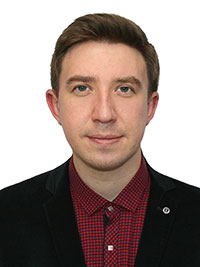 Oleksandr Kovalchuk. Department of Palaeontology, National Museum of Natural History, National Academy of Sciences of Ukraine, Bohdan Khmelnytsky 15, Kyiv 01054, Ukraine and Department of Palaeozoology, Faculty of Biological Sciences, University of Wrocław, Sienkiewicza 21, Wrocław 50-335, Poland. oleksandr.kovalchuk@uwr.edu.pl Corresponding author: biologiest@ukr.net
Oleksandr Kovalchuk. Department of Palaeontology, National Museum of Natural History, National Academy of Sciences of Ukraine, Bohdan Khmelnytsky 15, Kyiv 01054, Ukraine and Department of Palaeozoology, Faculty of Biological Sciences, University of Wrocław, Sienkiewicza 21, Wrocław 50-335, Poland. oleksandr.kovalchuk@uwr.edu.pl Corresponding author: biologiest@ukr.net
Oleksandr Kovalchuk is a Senior Researcher at the Department of Palaeontology, National Museum of Natural History of the National Academy of Sciences of Ukraine as well as Assistant Professor at the Department of Palaeozoology in the University of Wrocław (Poland). Oleksandr Kovalchuk graduated from the A.S. Makarenko Sumy State Pedagogical University (Ukraine) in 2012. He received his PhD in 2015 and DSc degree in 2020 at the I.I. Schmalhausen Institute of Zoology of the National Academy of Sciences of Ukraine. His research interests are related to morphology, historical faunistics and palaeoecology of Cenozoic and Mesozoic vertebrates of Europe.

